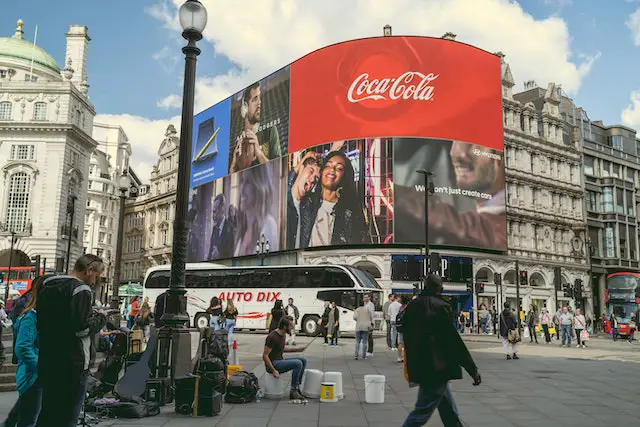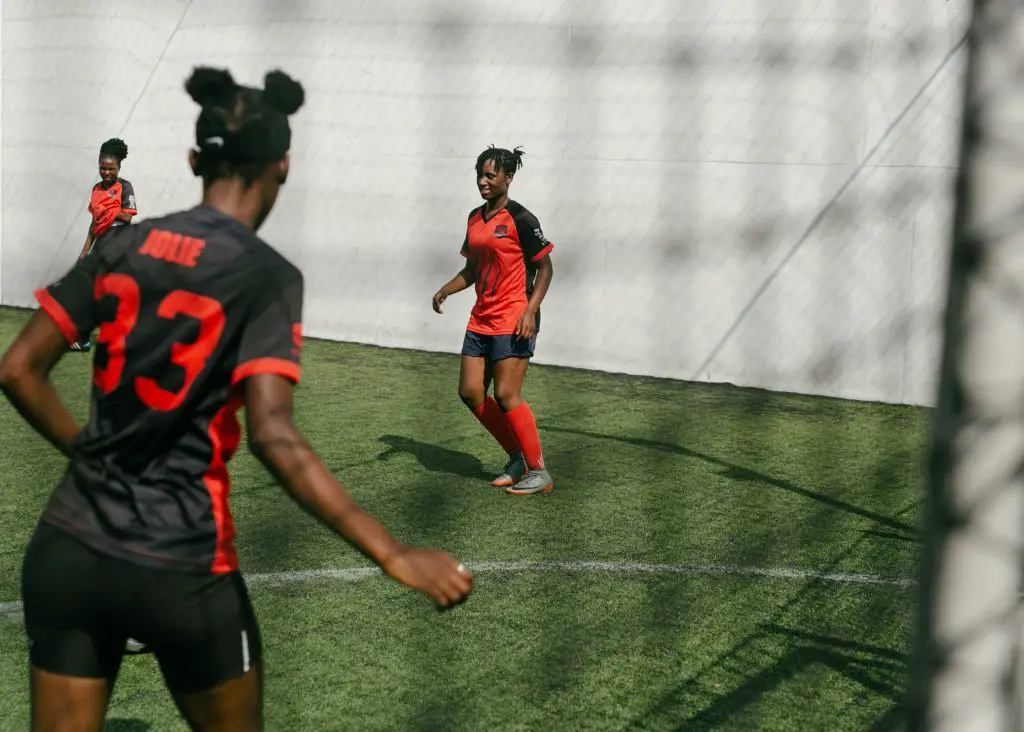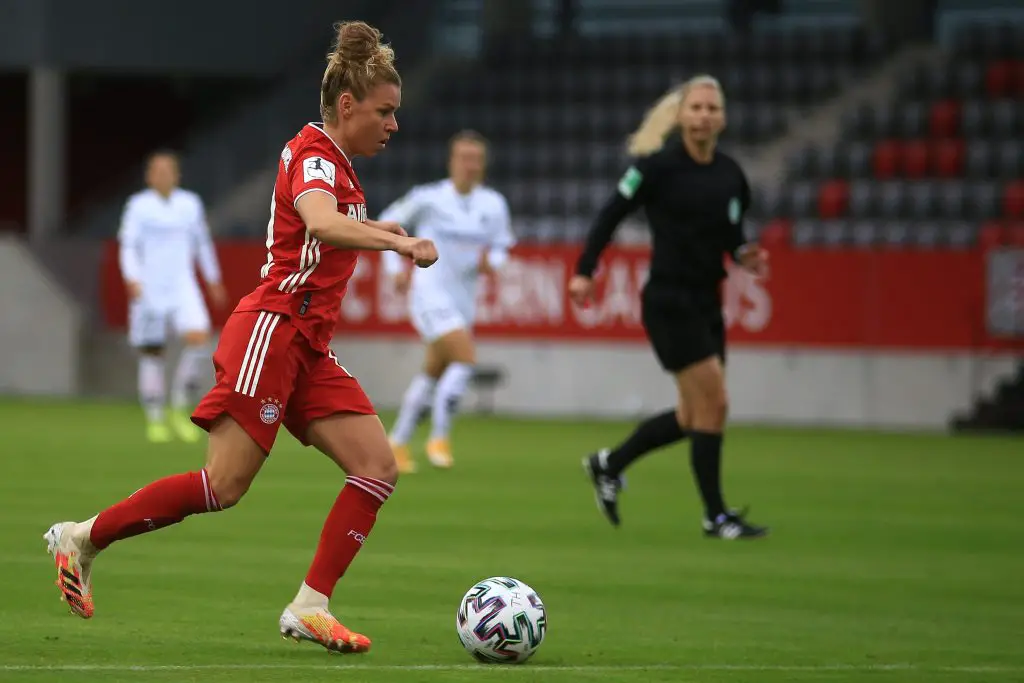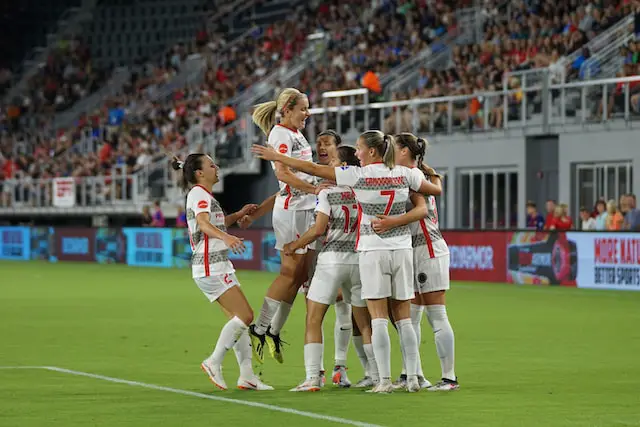Are you curious about the challenges and opportunities in women’s soccer? Well, the world of women’s soccer has been gaining more recognition and momentum in recent years. As the sport continues to grow, it faces a range of obstacles to overcome, such as gender inequality and lack of investment.
However, amidst these challenges, there are also exciting opportunities emerging, including increased media coverage and investment in women’s teams.
In this article, we’ll take a closer look at the unique challenges women’s soccer faces and how they can be turned into opportunities for growth and empowerment. Get ready to explore the dynamic world of women’s soccer and discover the possibilities that lie ahead.
Gender Equality in Women’s Soccer
Discrimination Against Women in Soccer
Women’s soccer has long been plagued by discrimination and unequal treatment. From lower wages to limited opportunities for advancement, female players have often found themselves at a disadvantage compared to their male counterparts.
Discrimination takes many forms in the sport, including unequal pay, lack of media coverage and exposure, and limited support and resources. It is crucial that steps are taken to address these challenges and ensure that gender equality is achieved in women’s soccer.
Gender Pay Gap in Women’s Soccer
One of the biggest challenges faced by female soccer players is the gender pay gap that exists within the sport. Despite their equal dedication, skills, and commitment to the game, women often earn significantly less than their male counterparts.
This discrepancy in wages is not only unfair but also sends a message that women’s contributions to the sport are valued less. To achieve gender equality in soccer, it is imperative that steps are taken to bridge this pay gap and provide female players with equal financial opportunities.
Lack of Media Coverage and Exposure

Women’s soccer has consistently struggled with a lack of media coverage and exposure. Major tournaments, leagues, and players often receive meager attention compared to their male counterparts.
This lack of exposure not only hinders the growth and development of the sport but also perpetuates the belief that women’s soccer is less significant and deserving of attention. Addressing this disparity in media coverage is vital in promoting gender equality and fostering a more inclusive and diverse soccer community.
Investment and Financial Resources
Limited Funding for Development
A significant challenge in women’s soccer is the limited funding available for development. Without sufficient financial support, it becomes difficult to provide adequate training facilities, coaching programs, and competitive opportunities for female players.
This lack of investment not only hampers the progress of the sport but also denies talented players the chance to reach their full potential. It is crucial to allocate more resources towards the development of women’s soccer to create a level playing field and foster a more equitable environment.
Equal Investment Opportunities
To achieve gender equality in soccer, it is essential to provide equal investment opportunities for women’s programs. This means allocating adequate resources to support the development of women’s leagues, clubs, and youth programs.
Additionally, investing in grassroots initiatives and promoting equal access to resources and training facilities will help bridge the gap between men’s and women’s soccer. By ensuring that women have the same opportunities as men to excel in the sport, we can pave the way for a more inclusive and equal soccer community.
Sponsorship and Endorsement Deals

Another area that requires attention in women’s soccer is the sponsorship and endorsement deals available to female players. Currently, female athletes receive far fewer endorsement opportunities compared to their male counterparts.
This limits their ability to establish themselves as household names and further dampens the exposure and visibility of women’s soccer. By actively pursuing and nurturing relationships with sponsors and brands, we can unlock numerous opportunities for female players and contribute to the growth and development of the sport.
Access to Training and Education
Youth Development Programs
Creating robust youth development programs specifically aimed at girls is vital to nurturing talent and promoting gender equality in soccer. These programs should aim to provide equal access to quality coaching, training facilities, and resources.
By identifying and supporting young talent at an early age, we can ensure that girls receive the same opportunities as boys to pursue a career in soccer. Developing comprehensive and inclusive youth development programs is a crucial step towards achieving gender equality in the sport.
Training Facilities and Resources
Having access to suitable training facilities and resources is crucial for the development of women’s soccer. Investing in the construction and improvement of training facilities specifically catering to female players will provide them with an environment conducive to honing their skills and reaching their full potential.
Additionally, ensuring equitable access to resources such as equipment, strength and conditioning programs, and video analysis tools will contribute to creating a level playing field for women in soccer.
Scholarship Opportunities
To encourage more girls to actively participate in soccer and pursue it as a career, it is essential to provide scholarship opportunities. Scholarships can help reduce the financial burden on aspiring female players, making the sport more accessible to a diverse range of talents.
By offering scholarships specifically for women’s soccer, educational institutions can help bridge the gap between education and athletic development. Scholarships not only provide access to quality education but also create a pathway for nurturing talent and achieving gender equality in the sport.

Competitive Opportunities
International Competitions
Providing more competitive opportunities for female players at the international level is crucial for their growth and development. International competitions allow players to showcase their skills on a global stage and gain valuable experience.
By investing in and expanding women’s international competitions, we can create a more equal and inclusive landscape for women’s soccer. Additionally, promoting the equal coverage and promotion of these events will further contribute to dismantling gender disparities in the sport.
Professional Leagues and Clubs
Developing and investing in professional leagues and clubs specifically for women’s soccer is vital to supporting the growth of the sport. Professional leagues provide female players with a platform to compete at a high level, earn fair wages, and receive the recognition they deserve.
Expanding the number of professional leagues and clubs, ensuring equal pay, and fostering a competitive environment will help foster gender equality in women’s soccer.
Enhanced Competitive Environment
Creating a more enhanced competitive environment for women’s soccer is critical for its development. This includes ensuring equal access to training resources, facilities, and coaching programs.
Additionally, promoting talent identification initiatives, player development pathways, and scouting systems will help nurture talent and provide equal opportunities for female players to progress in the sport.
By creating a level playing field and enhancing the competitive environment, women’s soccer can thrive and achieve gender equality.
Player Development and Coaching
Quality Coaching Programs
Investing in quality coaching programs for women’s soccer is essential to develop and nurture talent. Providing female players with qualified and experienced coaches who understand the unique challenges they face will contribute to their growth and skill development.

Moreover, offering coaching education and certification programs specially tailored for women’s soccer will encourage more women to pursue coaching careers and ensure a greater representation of female coaches in the sport.
Player Development Pathways
Establishing clear player development pathways is crucial in providing direction and guidance for female players. These pathways should outline the necessary steps and opportunities available for progressing from grassroots to professional soccer.
By creating well-defined development pathways with equal opportunities for both men and women, we can ensure that female players have a clear route to success within the sport. This will not only foster gender equality but also inspire and motivate young players to pursue their dreams.
Mentorship and Support Systems
Creating mentorship and support systems within women’s soccer is essential for the holistic development of players. Mentors can offer guidance, advice, and support to young players, helping them navigate the challenges they may face in their careers.
Additionally, establishing support systems that address the physical, mental, and emotional well-being of female players will contribute to their overall growth and success. Providing players with role models and a strong support system will help foster gender equality and inspire the next generation of female soccer stars.
Policies and Regulations
Equal Representation in Decision-making
Ensuring equal representation of women in decision-making bodies and committees is crucial for achieving gender equality in soccer. This includes positions such as national team coaches, board members, and administrators.
By having a diverse range of perspectives and voices at the table, we can create policies and regulations that are inclusive and considerate of the unique challenges faced by women in the sport. Equal representation will lead to policies that foster gender equality and contribute to a more equitable and diverse soccer community.
Inclusive Policies and Regulations
Developing inclusive policies and regulations that promote gender equality is paramount in women’s soccer. This includes implementing policies that address equal pay, anti-discrimination, maternity support, and flexible work arrangements.
By creating a supportive and inclusive environment through policies and regulations, we can ensure that female players have equal opportunities to compete, succeed, and thrive. Inclusive policies and regulations will contribute to breaking down barriers and promoting gender equality in the sport.
Gender-Sensitive Facilities
Creating gender-sensitive facilities is essential to providing a welcoming and inclusive environment for female players. This includes ensuring appropriate changing rooms, restrooms, medical facilities, and safe training spaces that cater to the needs of female athletes.
By prioritizing gender-sensitive facilities, we can create an inclusive and equitable sporting environment that values the experiences and requirements of all players. Gender-sensitive facilities will contribute to fostering gender equality and promoting the participation of women in soccer.
Promotion and Marketing
Increased Fan Engagement
Promoting increased fan engagement is crucial for the growth and development of women’s soccer. Engaging with fans through social media, live streaming, and interactive experiences can help create a more passionate and dedicated fan base.

By cultivating a strong fan community, we can increase the visibility and support for women’s soccer. Increased fan engagement will not only contribute to breaking down gender barriers but also provide financial support and sustainability to women’s leagues and clubs.
Promotion of Women’s Soccer Leagues
Promoting women’s soccer leagues is essential for enhancing their visibility and establishing them as credible and exciting competitions. This includes extensive media coverage, strong marketing campaigns, and strategic partnerships with broadcasters and sponsors.
By actively marketing and promoting women’s leagues, we can attract a larger audience, generate interest, and increase investment in the sport. Promoting women’s soccer leagues will contribute to dismantling gender stereotypes and providing equal opportunities for female players.
Strategic Marketing Campaigns
Developing strategic marketing campaigns focused on women’s soccer can help generate interest and support for the sport. These campaigns should emphasize the skill, passion, and dedication of female players, challenging the traditional narrative and stereotypes associated with women in sports.
By highlighting the accomplishments and stories of female athletes, we can inspire and motivate a new generation of players and fans. Strategic marketing campaigns will foster gender equality by creating a more inclusive and diverse soccer culture.
Media and Sponsorship
Media Coverage and Broadcasting Rights
Increasing media coverage and securing broadcasting rights for women’s soccer is pivotal for its growth and development. By providing equal coverage and exposure to women’s tournaments, matches, and players, we can challenge the prevailing bias and stereotypes that currently exist.
Additionally, ensuring fair broadcasting rights deals that bring women’s soccer to a wider audience will contribute to the commercial viability and sustainability of the sport. Increased media coverage and broadcasting rights will foster gender equality by providing female players with the visibility and recognition they deserve.
Corporate Sponsorship and Support
Securing corporate sponsorships and support is crucial for the financial sustainability of women’s soccer. By partnering with companies that share the values of gender equality, we can establish a network of sponsors that contribute to the growth and development of the sport.
Corporate sponsorships not only provide financial support but also bring credibility and legitimacy to women’s soccer. By actively seeking and nurturing corporate partnerships, we can ensure a more equal playing field and create a sustainable future for the sport.
Brand Partnerships
Creating brand partnerships specifically aimed at promoting women’s soccer is vital to increasing its visibility and recognition. By partnering with brands that prioritize diversity, inclusivity, and gender equality, we can create a positive and empowering image of women’s soccer.
These brand partnerships can help drive awareness, engagement, and support from a wider audience. By actively seeking and fostering brand partnerships, we can challenge societal norms, break down gender barriers, and create a more inclusive and equitable soccer landscape.
Role Models and Inspirational Figures
Celebration of Female Soccer Icons
Celebrating and recognizing the achievements of female soccer icons is crucial for inspiring and motivating young players. By shining a spotlight on the accomplishments of women in the sport, we can provide young athletes with role models to look up to and emulate.
Furthermore, acknowledging the contributions of female soccer icons through awards, hall of fames, and commemorative events will help solidify their place in history and create a lasting legacy. Celebrating female soccer icons will inspire the next generation of players and contribute to achieving gender equality in the sport.
Incentives for Young Players
To encourage more young players to pursue a career in soccer, it is essential to provide incentives that reward their dedication and achievements. This can include scholarships, grants, mentoring programs, and opportunities to train with professional clubs or national teams.
By offering incentives, we can create a supportive and motivating environment that nurtures and develops young talent. Incentives will not only contribute to increasing participation in women’s soccer but also foster gender equality by providing equal opportunities for growth and success.
Inspiring the New Generation of Players
Inspiring the next generation of players is key to fostering gender equality in women’s soccer. This can be achieved through various initiatives, such as hosting clinics, camps, and workshops led by female players and coaches.
By providing young athletes with the opportunity to interact and learn from their role models, we can instill confidence, passion, and self-belief. Inspiring the new generation of players will not only contribute to the growth of the sport but also challenge societal norms and stereotypes associated with women in soccer.

Changing Perceptions and Stereotypes
Breaking Gender Stereotypes in Soccer
Breaking gender stereotypes associated with soccer is crucial for achieving gender equality in the sport. This includes challenging the perception that soccer is exclusively a male domain and encouraging the active participation and support of women.
By promoting female athletes as strong, skilled, and dedicated individuals, we can dismantle the preconceived notions and biases that have hindered the growth of women’s soccer. Breaking gender stereotypes will create a more inclusive and equitable soccer culture that values the contributions of all players, regardless of their gender.
Changing Societal Attitudes
Changing societal attitudes towards women’s soccer is essential for fostering gender equality. This involves challenging deep-rooted prejudices and biases that undermine the achievements and potential of female players.
By educating the public, raising awareness, and engaging in conversations about women’s soccer, we can create a more accepting and supportive environment. Changing societal attitudes will contribute to dismantling barriers and ensuring that women’s soccer is celebrated and valued on an equal footing with men’s soccer.
Positive Public Perception
Promoting a positive public perception of women’s soccer is essential for its growth and success. By emphasizing the excitement, skill, and competitiveness of the sport, we can shift the narrative and challenge negative stereotypes.
Highlighting the positive impact of women’s soccer on communities, empowerment, and personal development will foster a more favorable perception among the public. A positive public perception will contribute to the growth and viability of women’s soccer, leading to increased support, investment, and opportunities for female players.
Conclusion
In wrapping up, we’ve delved deep into the dynamic world of women’s soccer, shedding light on both the existing hidden challenges and the emerging opportunities. While obstacles such as gender inequality and lack of investment remain, the increasing media attention and investment in women’s teams signal a promising future.
The journey ahead may be filled with hurdles, but the potential for growth and empowerment in women’s soccer is immense. As we continue to advocate for equality and celebrate the successes within the sport, the prospects for women’s soccer are only set to rise. Here’s to a future where the playing field is truly level, and the possibilities are limitless


